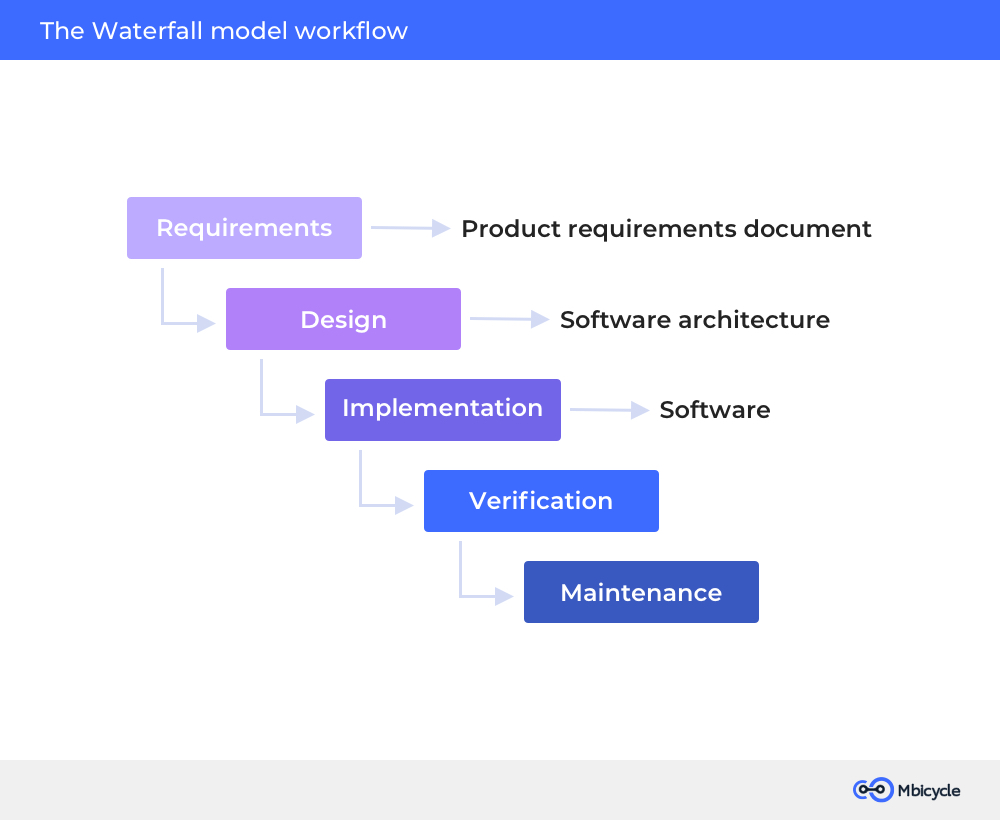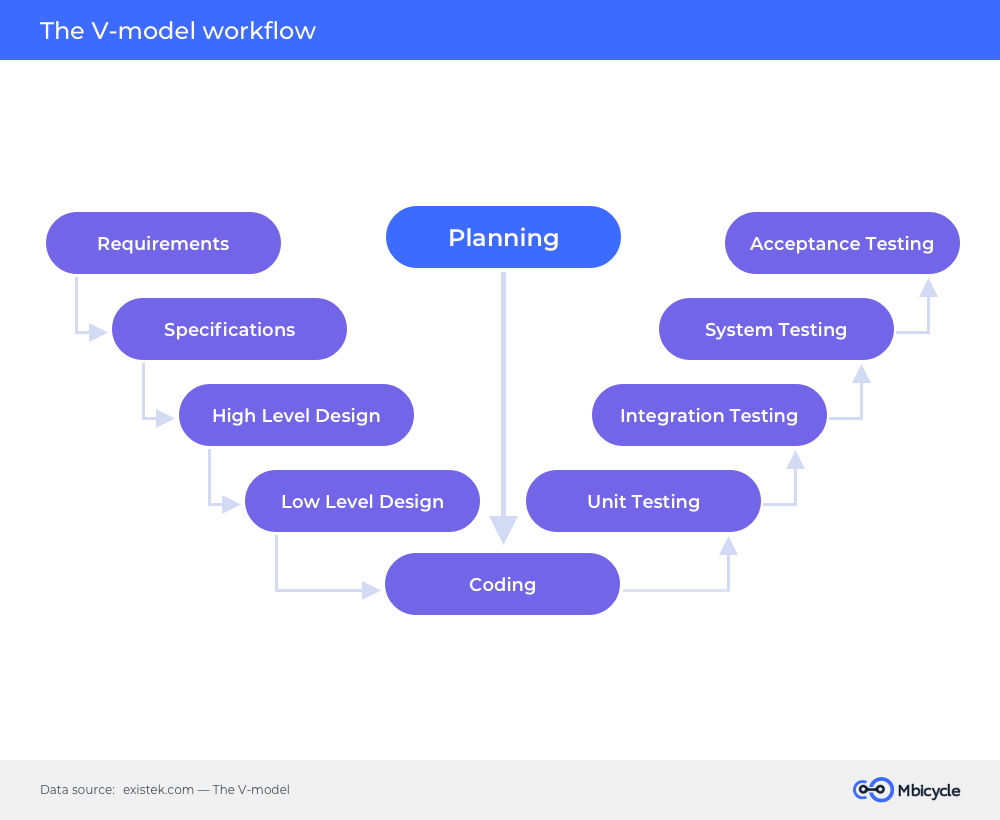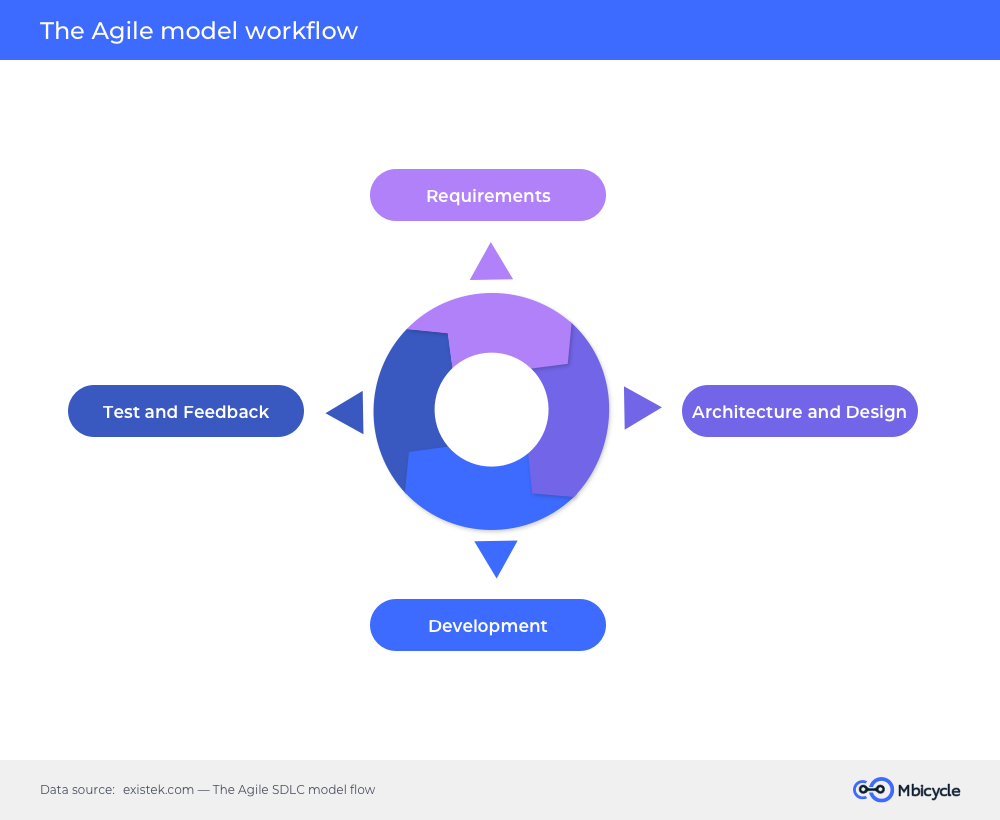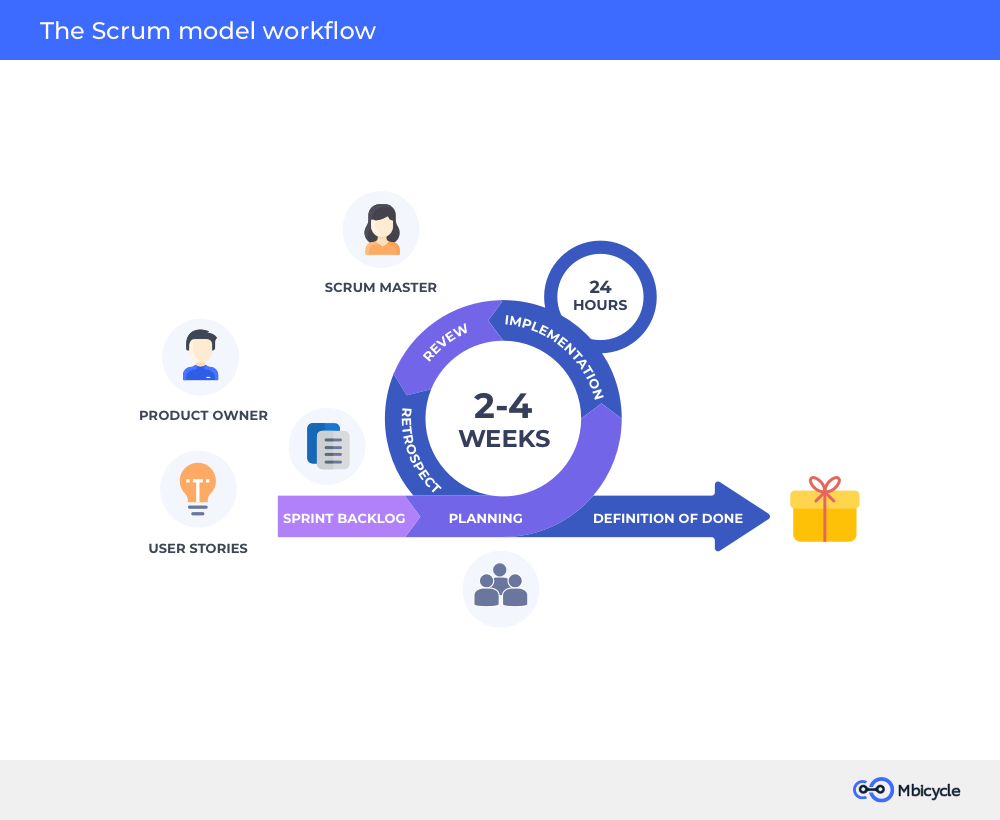Top 3 Software Development Models
The right choice of a software development approach often defines the success of an entire project as it’s hard to achieve stable functionality and performance without the proper methodology chosen. Project managers often try to find the best option out of many, so in this article, we are going to name and analyze the stages of the software development life cycle (SDLC) and the most applicable methodologies.
Every software goes through its own life cycle, which is a sequence of stages from an idea to the release. SDLC models help navigate through this complex software development process, largely determining a project’s budget, time-to-market, number of implemented features, and the ability to meet the stakeholders’ requirements.
There are more than 50 SDLC models in use today, each with its strengths and weaknesses. Drawing on a variety of our delivered software projects, we’ll look into the most popular development models and define their particularities. As usual, let’s start with the basics.
The Stages of Software Development Life Cycle
A software development methodology is a system that determines how tasks are assigned, implemented, and controlled. It includes a set of stages meant to organize the development process properly, as follows:
- Planning
Each SDLC model starts with planning when all stakeholders discuss and analyze their requirements related to the project. The main goal at this stage is to define the task scope, draw up documentation, and schedule the next steps of the software development process.
Often, quality assurance engineers are called in at this stage too, to provide their insights into potential unobvious issues. - Design
At the second stage, the team comes up with the project specifics, discussing deadlines, technology stack, team workload, bottlenecks, and budget with the project owner and every other stakeholder involved. - Development
After all requirements are approved and the project structure is defined, here starts the next stage — actual software development. At this stage, programmers write the source code according to the project specification and pre-defined requirements. For instance, frontend developers implement user interfaces and set up the interaction logic between the software and its end-users, while backend developers cater to the server-side. - Testing
The testing stage implies checking software performance and further debugging. Once quality assurance engineers find bugs and issues when running software, they document them and report to the development team for fixing. Testing continues until every critical issue is fixed and the software runs stably both on the client- and server-side. - Deployment
This stage is about launching your software for end-users when you’re sure that it is complete and has no critical issues. After the release, your tech support team stays to gather user feedback, consult, and support users for a certain amount of time.
Now when we know what stages software under development usually comes through, let’s talk about the most common software development models in practice today.

software development?
The Types of Software Development Models
To assure efficient work at every stage of creating a software product, it’s vitally important to choose the right SDLC model that suits both your project team and goals. Today there is a variety of software development models you can choose from, such as:
- The Waterfall/Cascade model
- Code and fix
- Agile
- The V-model
- The Spiral model
- The Incremental model
- The Chaos model
- The Prototype model
Let’s discuss a few most popular ones from this list above.
Waterfall
This development model has been in use since the 1970s, so it is usually considered a classic model. Using the Waterfall model means the sequential implementation of every SDLC stage: planning, architecture, development, testing, and deployment. Each stage must be completed before the next one starts, that’s why this model is also called the Cascade one.
Waterfall development is strictly documented and implies a number of features expected at every stage. Because of this, developers often define Waterfall as the fastest and easiest model to work with, but only in cases when software development can be carried out strictly sequentially.

Since very few projects can be developed in a strict sequence of stages, the Waterfall model is considered rather outdated today. If you go for it nevertheless, the budget and timing of your project should be defined in advance. Also, you won’t be able to roll back and fix issues as they can only be detected late in the SDLС. This can significantly increase the budget and delay the release date.
The pros of the Waterfall model:
- Stages go one by one in a single sequence.
- It’s easy to assign and prioritize tasks.
- It’s simple to manage as every stage has a predefined result and execution guidelines.
The cons of the Waterfall model:
- It’s hard to track and assess the progress of the development before the stage is over.
- Clients get a ready-made solution only when the last stage of the SDLC is completed.
- This model is not suitable for complex and long-term projects.
That said, we recommend the Waterfall model only for small and mid-sized projects, where the initial requirements are strictly defined and won’t change significantly further on.
The V-model
The V-model, also known as the validation and verification model, is focused on detailed checking and testing of a software product during every development stage. While developers are working on the code, testers are running unit tests in parallel with the development process.

Using such a workflow provides for strict quality control but at the same time makes this model more expensive and time-consuming than other SDLC models. Since all requirements should be set at the planning stage and cannot be changed later, errors and issues detected during testing are hard to fix before the end of the development.
The pros of the V-model:
- This model is easy-to-control as it gives predictable results at every stage.
- It’s possible to find and fix errors and bugs at each SDLC stage.
- It’s great for small software projects with stable and explicit requirements that are clear from the very beginning.
The cons of the V-model:
- Using this model entails some risks in case of changing requirements or finding severe errors during testing.
- The V-model isn’t flexible enough so it doesn’t work well for big software projects.
As a result, using the V-model is recommended mostly for small projects with well-defined requirements.
Agile
The Agile group of SDLC models implies iterative development, intensive communication, and providing the client with intermediary results after every iteration to get proper feedback. This approach helps clients better understand whether they like the result or not. This is one of the biggest advantages of Agile models, making them popular with more than 70% of software development companies.

On the other hand, clients and developers choosing an Agile model face the difficulties of estimating the time-to-market and cost of the final solution because of the lack of defined requirements from the start. That’s why Agile models are often used in extreme programming.
The basis of such a model consists of short weekly meetings and typically two-week sprints, which are part of the Scrum approach.
The Scrum model is Agile in nature, so it’s broken down into iterations. With the Scrum approach, development teams often have Scrum-masters who ensure continuous teamwork, creating favorable conditions for it, keeping the team motivated, and arrange meetings. Apart from a Scrum-master, there’s also the new role of a Product Owner. A Product Owner leads the development, monitors the progress, and makes sure that the results of the team’s work meet all the requirements.

This development model is effective due to its flexibility. As project requirements often change during development, the model allows accommodating these changes easily.
The pros of Agile models:
- Development is split into short iterations.
- Clients are able to make changes at all stages and track their impact on the product in general.
- Risks are minimal thanks to the flexible change management approach.
- The first version of a software product can be rolled out pretty quickly.
The cons of Agile models:
- The timing of the project’s release and its final cost can significantly vary due to the changes made during the development.
- Implementing new requirements may cause conflicts with the already written code and the project’s specifications.
- Working with an Agile model requires high technical and soft skills from every member of the development team.
Summing Up
In this article, we discussed a few of the most widespread software development models, describing differences in their approaches to development and pointing out their pros and cons.
As is often the case, there is no single solution that would be equally effective for each software project. A good tip here is to try a few models with your development team to find out which one fits better considering your project requirements.
The rule of thumb is that in cases where project requirements are vague, deadlines and budgets are not formalized strictly, Agile-led models are often the best option. At the same time, when the project requirements are strictly defined from the start and won’t change significantly during development, take a look at Waterfall or the V-model with their sequential development.
In case you’re already experienced in choosing software development models, feel free to share your professional opinion with us. If you still have any questions about SDLC models, get in touch with the Mbicycle outsourcing software development company via the contact form on our website.







